iPhone 13 Pro


Apple’s latest round of phone releases saw the iPhone 13 Pro announced alongside the base iPhone 13 and I have now spent a few days with both sizes of the device. Here’s what I found.
The iPhone 13 Pro and iPhone 13 Pro Max are the much bigger updates this year and I feel they have enough tempting features to get iPhone fans to step up from the more modest iPhone 13 and iPhone 13 Mini.
It’s the new 120Hz VRR ProMotion displays that make the best first impression, but the camera system and improvements to battery life are enticing too.
Design and Screen
- New Sierra Blue color
- 20% smaller notch
- ProMotion display for 120Hz refresh rate
Explaining the benefits of faster refresh rate displays and 120Hz is hard. It’s really one of those things that you need to try out in the shop to get a feel for what it adds.
All previous iPhones (and the iPhone 13) have 60Hz panels, meaning they attempt to refresh 60 times every second. With the iPhone 13 and 13 Pro, they can now refresh up to 120Hz – so 120 times a second.
Refreshing at 120Hz isn’t always a good use of power, so these LTPO panels are adaptive. When you’re doing something where 120Hz makes a visible difference, like scrolling Twitter or gaming, it’ll aim for that. When you’re watching a YouTube video, most of which are shot at 30fps, the screen will slow down. Reading a book? It’ll get even slower, down to a low of 10Hz.
I noticed this faster refresh and benefits of ProMotion right from the setup screen. The smoother scrolling is instantly noticeable and now when I pick up the iPhone 13 or iPhone 12 Pro it just feels slower.
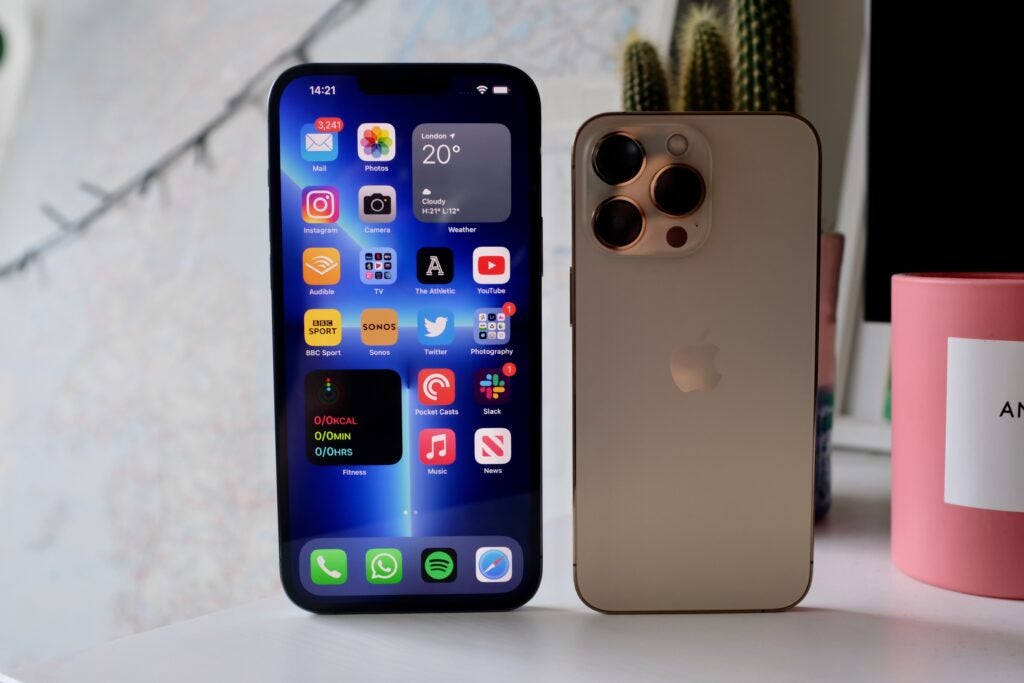
Apple is far from the first to implement this tech. There were 90Hz screens on Android phones in 2017, while both the Samsung Galaxy S21 Ultra and the OnePlus 9 Pro use similar LTPO tech. But I am just glad Apple has finally bought it to the iPhone.
ProMotion aside, the screens on both the 6.7-inch Pro Max model and the 6.1-inch Pro are sublime. The OLED panels give deep blacks with infinite contrast, whole the brightness levels make outdoor readability easy. HDR films from iTunes look great, too.
After the big design refresh with the iPhone 12, the 13 series was always going to stick to that same blueprint and visually, the iPhone 13 Pro looks very much like the outgoing model. It’s slightly thicker and heavier (the Max especially is very heavy, see below for all the weights and dimensions) with a far larger camera module and a 20% smaller notch.
There’s a new colour too, in the form of Sierra Blue. It’s not as rich as the Pacific Blue iPhone 12 Pro and has a silvery finish – but I like it a lot. The other colours are gold, graphite and silver.
Camera
- Much larger wide sensor
- Cinematic video mode with blur effects
- 3x optical zoom capable telephoto camera
When Apple launched the iPhone 12 Pro and Pro Max, both models were fairly different. If you wanted in-body stabilisation or the bigger wide sensor, you had to go with the 6.7-inch Max model. That’s not the case anymore.
Both the iPhone 13 Pro and Pro Max have the exact same camera, and it’s a very exciting array with only one real missing feature I can think of in the form of some Galaxy S21 Ultra-beating periscope zoom.
The triple camera array consists of a 12MP wide sensor with an f/1.5 lens, a 12MP f/1.8 ultra wide for a 120-degree field of view and a 12MP, 77mm telephoto capable of 3x optical zoom. There’s also a LiDAR sensor to help with low-light portraits.
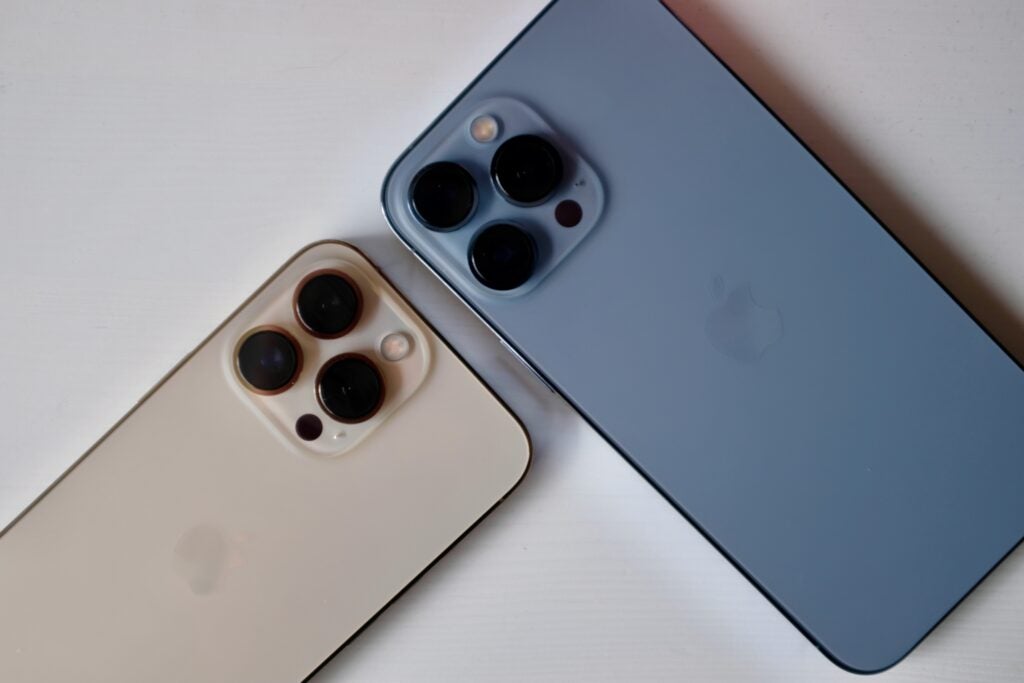
That 12MP wide camera has far larger pixels and a wider aperture than before and Apple claims this can let in 2.2x more light than before. The new ultra wide can also, again according to Apple, let in 92% more light. More light equals better snaps, especially when it’s darker.
Another new camera feature is the macro mode, which uses data from the ultra wide to increase detail on close up shots. In typical Apple fashion, the way this macro works is a little odd and it seems like Apple is already set to change it.
Currently, this macro mode comes on automatically when you get close to an object and there’s no way to turn it off. This would be fine, but you lose some of the natural bokeh that the big main sensor can capture and as a result, this macro mode might not always be preferable.
I’m very excited to properly take this phone out and shoot with this new camera setup. The improved hardware, focus on getting more light into the sensors and software advances, like Smart HDR 4, make it a seriously tempting prospect.
There’s a new Cinematic mode that is portrait mode for video. It takes this idea further by adding in focus racking, allowing the camera to switch focus points, for example, if a face turns away. As I mentioned in my first look at the iPhone 13, I was impressed with how smooth the focus switching was in Cinematic mode. Later in the year, the iPhone 13 Pro will also gain support for ProRes recording.
I would have liked to see some more upgrades to the front camera. The 12MP selfie camera has been the same for generations now and it could really do with a little more attention.
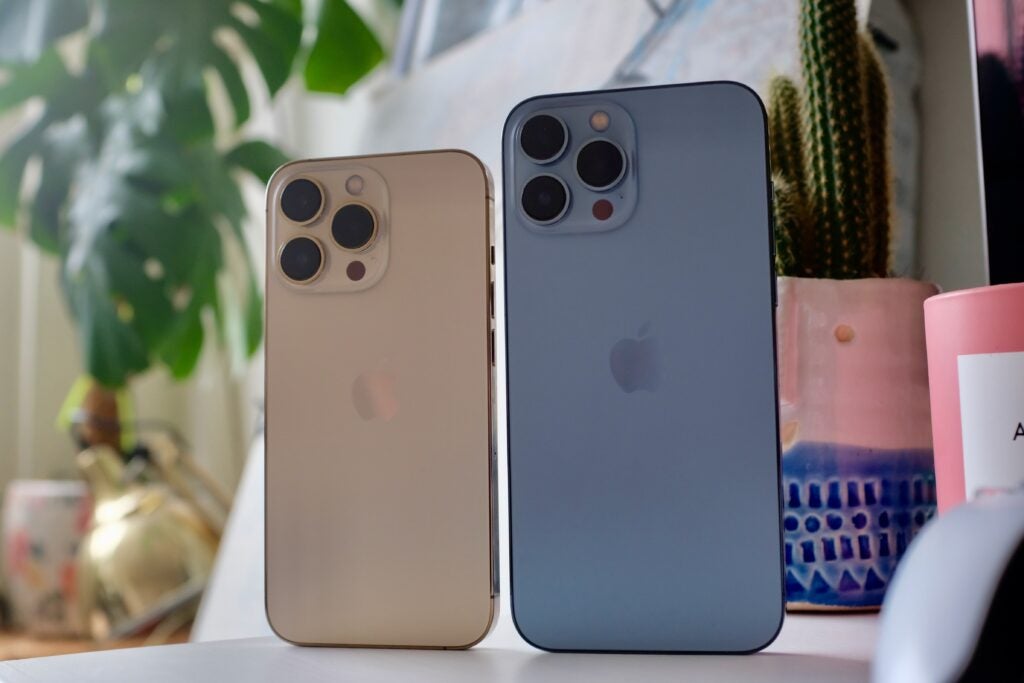
Performance and battery life
- Powered by the A15 Bionic chipset
- Storage options up to 1TB
- Bigger batteries across the range
Battery life is getting a big boost with the iPhone 13 Pro and Pro Max. Not only do they have bigger cells, but the more efficient chipset and that ProMotion display all combine for improved endurance.
While I will need much more time to properly judge the battery life here, the prospect of an extra 2.5 hours on the Max model is intriguing.
Charging is still done via Lightning, which means we are still waiting for an iPhone with USB-C. For a Pro phone that could be transferring countless GBs of ProRes footage, the speed of Lightning (which runs over USB 2.0) is far too slow.
The base storage size is still 128GB, with 256GB and 512GB the two options I would suggest to most people. Then there’s a 1TB version too – a first for an iPhone.
Powering the phone is the A15 Bionic which has a six core CPU, five core GPU and a 16 core neural engine for AI tasks. Apple has kitted the Pro models out with a five core GPU rather than the four core version in the iPhone 13 – though it’s not clear what the benefits are.
I ran a round of Geekbench 5 to get a quick overview of the performance from A15 Bionic and the results impressed me. In the multi-core test, the score of 4791 comfortably beat the best Android phones and the 4007 score from the iPhone 12 Pro.
There’s a wider selection of 5G bands this year thanks to a new 5G modem and some regions will get a model with mmWave 5G.

Early Verdict
After using the iPhone 13 Pro and Pro Max for a few days, it’s clear there are some big new features that make a notable difference.
ProMotion tops this list for me, but the mass of camera upgrades and the prospect of better battery life isn’t to be dismissed.
iPhone 13 Pro and iPhone 13 Max Specs
The post iPhone 13 Pro appeared first on Trusted Reviews.
Source Trusted Reviews ,Home Appliances Reviews

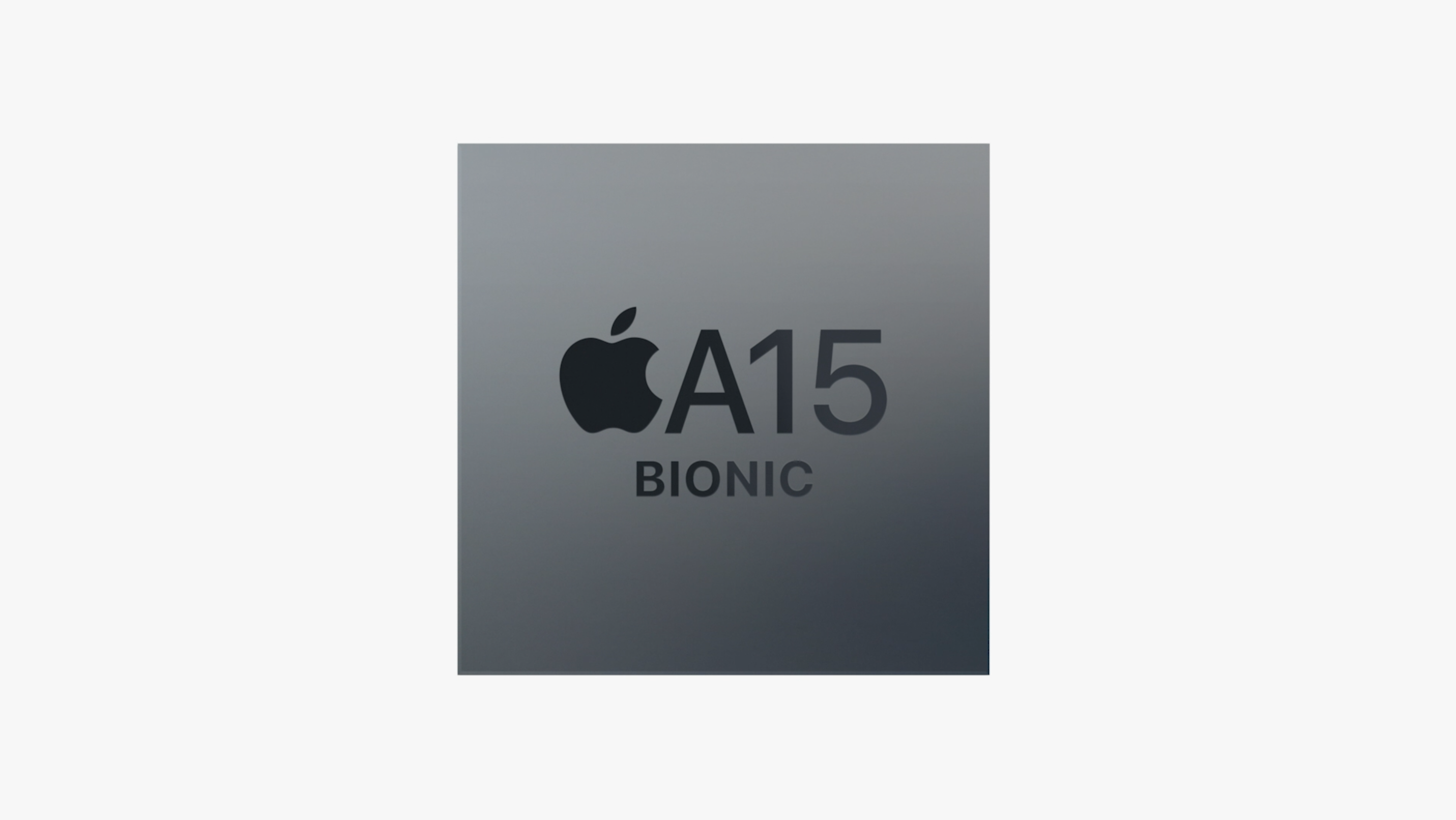
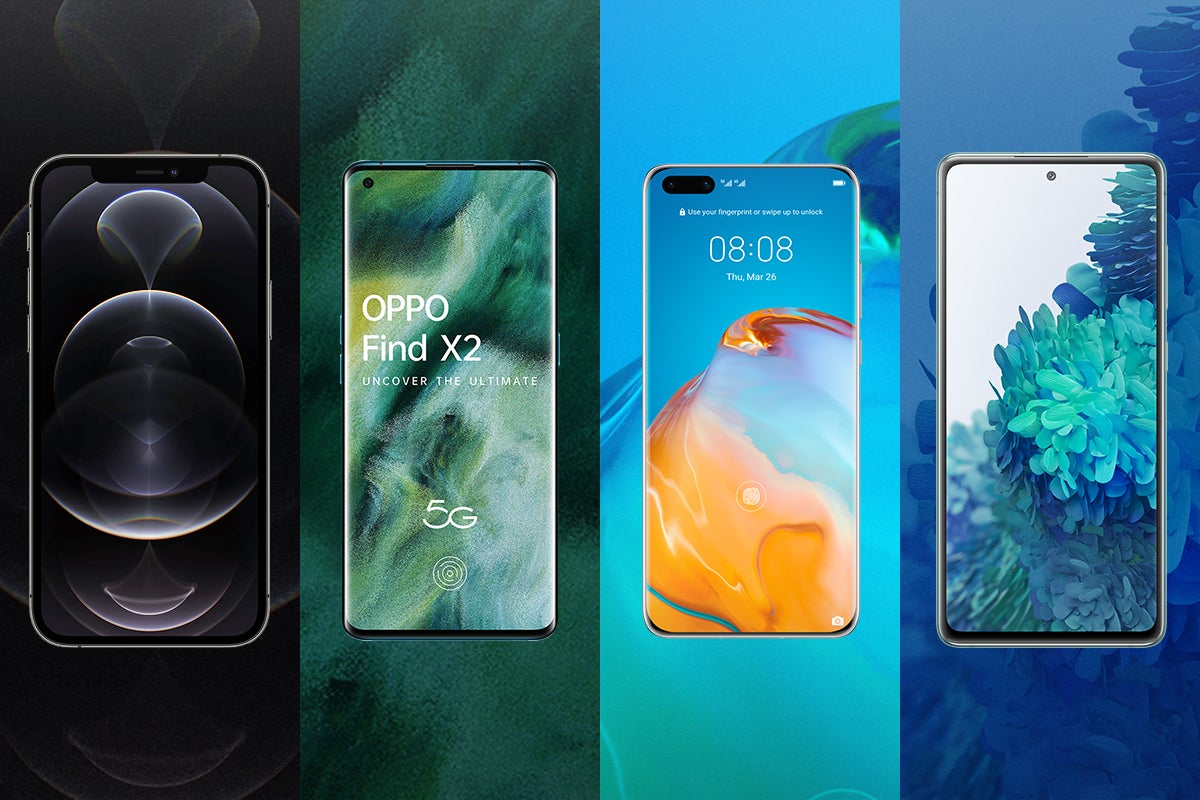

No comments